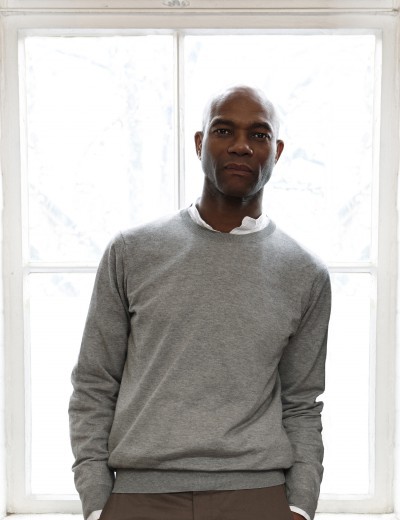
Joe Casely-Hayford
About
Joe Casely-Hayford was born in Ghana in 1956. His family moved to London when he was a child.
He worked as an apprentice to a Savile Row tailor before enrolling at the Tailor and Cutter Academy in 1974. In 1975, he joined Central St. Martin's School of Art, for a one-year History of Art course.
Joe then joined the music industry and became well-known as a designer of clothing for rock groups. Demand for his clothes off-stage resulted in freelance contracts as well as commissions for costumes for both theatre and film. In 1992, he dressed U2 for their world tour.
The Look
Street style elegance combined with sharp tailoring and masterly technique has ensured that Joe Casely-Hayford has an following who appreciate his functional and cutting edge clothes and his club culture influence. The traditional design tenets of quality fabric, attention to detail, and excellent cut underpin all of Joe Casely-Hayford's work. This is not to deny the surprise of his designs, which often have unusual details of decoration or spicy color combinations to enliven them. His clothes are for the discerning customer who wants styles to retain their appeal for more than one season. The clothes are always very contemporary in feel, though rarely following fashion fads. Although he returns to his skillful pleating and cutting of traditional wool fabrics for classic suits each season, his influences are wide ranging. He can just as stylishly redefine 1970s wide collar coats as create American Indian-style soft leather jackets. His menswear is perhaps his perennial tour de force. Always interesting and innovative, his collections are a combination of highly desirable good quality with witty detailing. His clean-cut wool suits are given a stylish twist through pleating or cut-out lapels with curling velvet inserts, making them more individual. His designs may reveal a certain amount of anarchic license in their cut, but he is never cultish or unwearable, carefully balancing the elements in his work with his original vision to make clothes with a long life span. Even his more experimental garments, like the all-in-one suit he created in the late 1980s that looked like a two-piece from the front but had a battle-dress back, still have a beauty in their fit and the refined finish that distinguishes all his work. His clothes for women have a sexy feel, with sculpted leather waistcoats and neatly fitted suits alongside funky knitwear and simple yet sophisticated dresses, each with the usual Casely-Hayford twist marking out their design. His designs are complemented by the seasonal addition of interesting and unusual footwear created for Shelly's, the London shoe chain. Casely-Hayford has quietly built a niche for himself in British fashion as a master of cut, and his work has also just as quietly gained an international following, especially in Japan, where his work is very popular. His clothes have the appeal of longevity while at the same time maintaining style and well-balanced beauty through the combination of each element of design, providing carefully thought-out garments that flatter the wearer with their witty detail and consistently good fit. His collections in 2000-01 featured an eclectic riot of colors and fabrics, from orange and green to white and black, from solid to tie-dye, from leather to tweed, from tulle to suede, from fake fur to wool. Described alternatingly as conservative, cutting edge, bold, and subliminal, Casely-Hayford's designs, while remaining experimental, are still very wearable.
Who Wears It
U2, Liam Gallagher, Lou Reed, Tori Amos, Neneh Cherry, Suede, Glamma Kid, Lynden David Hall, Mica Paris, Black Uhuru, The Clash